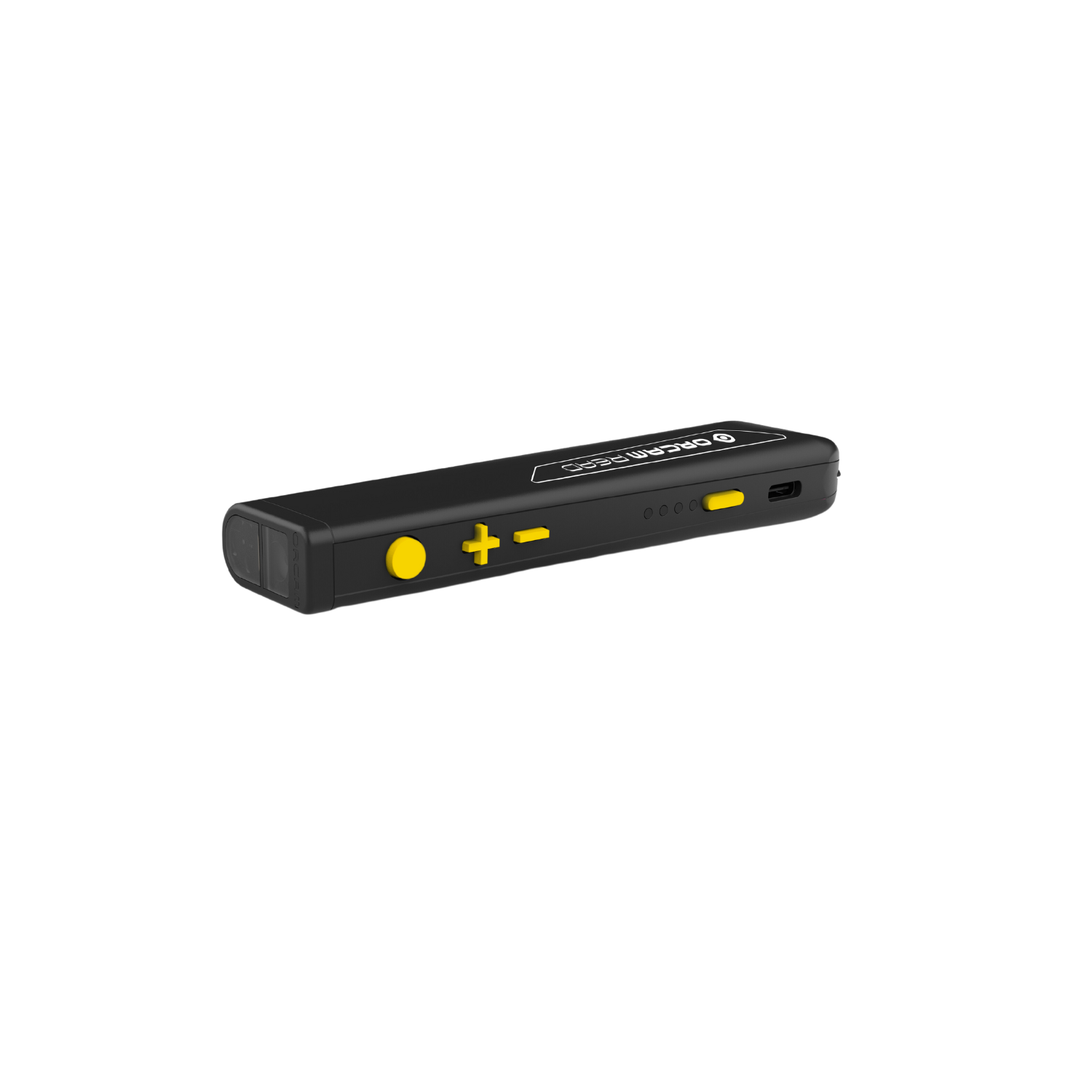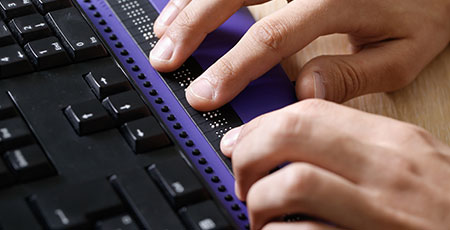Discover Innovative Devices Created for the Visually Impaired
The advancement of cutting-edge devices for the aesthetically damaged represents a significant advancement in access and freedom. Technologies such as wise glasses with AI capacities and mobile applications designed to give acoustic descriptions are reshaping everyday experiences for individuals. In addition, wearable tools that employ haptic responses improve environmental awareness, while contemporary Braille developments offer new ways to engage with message. As these tools remain to develop, their effect on the lives of those with aesthetic problems elevates important concerns regarding the future of inclusivity and autonomy in various facets of life. What exists in advance in this technological landscape?
Smart Glasses for Navigation

Smart glasses made for navigation are reinventing the method visually damaged individuals connect with their environment. These advanced gadgets utilize a combination of electronic camera innovation, synthetic knowledge, and auditory feedback to provide real-time details about environments. By employing barrier detection systems, smart glasses can signal individuals to possible risks, making it possible for much safer wheelchair in both familiar and unknown settings.
The integration of GPS technology additionally improves navigation abilities, permitting users to receive acoustic directions as they move. This hands-free strategy not only cultivates independence however additionally empowers aesthetically damaged individuals to navigate urban landscapes with boosted self-confidence. In addition, lots of smart glasses are furnished with attributes that identify sites and street signs, giving contextual info that enhances the customer experience.
Furthermore, the development of these gadgets is constantly progressing, with business functioning to enhance the accuracy of things recognition and expand the series of navigational functions. As smart glasses end up being more accessible and inexpensive, they hold the possible to considerably transform daily life for visually impaired users. Ultimately, these ingenious tools represent an essential step toward inclusivity, offering enhanced movement and a higher sense of autonomy for individuals browsing the world around them.

Mobile Apps for Daily Living
How can mobile applications enhance the day-to-days live of visually damaged people? Mobile apps are transforming the means visually damaged individuals navigate their atmospheres, handle daily tasks, and gain access to information. These applications give vital support with different capabilities, fostering self-reliance and enhancing top quality of life.
A number of innovative mobile applications are designed especially for everyday living. Apps like Be My Eyes attach visually damaged users with sighted volunteers using video telephone calls, enabling them to receive real-time aid with jobs such as reading tags or navigating strange rooms. Seeing AI, created by Microsoft, utilizes fabricated knowledge to describe environments, reviewed message, and identify things, successfully changing a smart device into an effective tool for day-to-day aid.
Additionally, navigation apps customized for the visually damaged, such as Aira and BlindSquare, provide audio-based instructions and ecological details, making it possible for users to traverse their surroundings securely and confidently. Beyond navigating and prompt assistance, mobile applications also support organization and job management, with attributes that help users set tips, develop order of business, and track visits. In recap, mobile applications act as vital resources, empowering visually damaged people to lead even more independent and satisfying lives.
Wearable Technologies for Aid
Empowerment via technology is progressively obvious in the realm of wearable devices designed to aid aesthetically damaged people. These ingenious devices integrate perfectly right into life, boosting navigating and supplying crucial comments to individuals. Clever glasses outfitted with cameras can check out and recognize faces message out loud, allowing users to connect even more confidently in expert and social settings.
An additional noteworthy advancement is using haptic feedback systems in wearable tools. These systems use resonances or various other tactile signals to share info concerning the individual's setting, such as challenges or adjustments in terrain, boosting movement and security. Wearable modern technologies additionally include wristbands that link to mobile phones, alerting read customers to notifications via subtle resonances, therefore enhancing connectivity without dependence on visual hints.
As these modern technologies remain to progress, they are not just improving self-reliance for aesthetically impaired people yet also cultivating a higher feeling of inclusion in culture. By linking the space in between challenges dealt with in day-to-day living and the capacity for autonomy, wearable modern technologies act as pivotal tools in the mission for equal rights and empowerment for those with visual problems.
Audio Description Devices
Sound description tools play a vital duty in enhancing availability for aesthetically damaged individuals, offering them with the capability to involve with aesthetic media. Mobility aids for visually impaired users. These devices offer narrated descriptions of essential visual aspects in films, television shows, and live efficiencies, ensuring that users can fully comprehend the context and emotions conveyed through visuals
Sound description can be incorporated right into numerous systems, consisting of streaming solutions, movie theater testings, and live cinema. Many popular streaming services now consist of audio summary as an accessibility attribute, permitting customers to choose it quickly. In addition to conventional media, specialized applications also exist, offering audio summaries for art events, galleries, and other social occasions.
The efficiency of audio description hinges on the ability of the storytellers, who need to share address visual information succinctly without taking away from the initial sound. Advancements in this field are also leading the way for more individualized experiences, where customers can change the level of detail and pacing according to their choices.
Braille Innovations and Tools
Braille tools and innovations have actually considerably transformed the way visually impaired people interact with text and info. Modern innovations have brought about the growth of versatile tools that boost literacy and freedom among users. Significantly, Braille present innovations have actually advanced, allowing for dynamic analysis experiences. These devices transform electronic message into Braille, enabling individuals to access a huge array of details on computers, tablet computers, and smart devices.
Moreover, mobile Braille notetakers incorporate typical Braille input with modern functionalities, facilitating note-taking, organizing, and record editing and enhancing on the move. OCR devices for the blind. These portable tools commonly include text-to-speech capabilities, bridging the void between Braille and auditory information
Furthermore, cutting-edge Braille printers have emerged, permitting individuals to produce Braille tags, papers, and instructional materials efficiently. This availability cultivates better involvement in professional and instructional environments, eventually promoting inclusivity.
Furthermore, study into smart Braille innovations remains to expand. Tools that incorporate expert system are being discovered to offer real-time navigating support and contextual info, boosting the individual experience in varied settings. Overall, these technologies reflect a dedication to empowering aesthetically impaired people through innovation, guaranteeing they can quickly accessibility and engage with the globe around them.

Conclusion
The development of ingenious devices for the visually damaged significantly enhances freedom and top quality of life. Smart glasses, mobile applications, wearable innovations, audio description tools, and Braille innovations collectively empower people by giving necessary navigating aid, ecological recognition, and boosted analysis experiences. These modern technologies not just foster higher addition however likewise promote autonomy in daily activities, inevitably adding to an extra obtainable and fair society for visually damaged individuals. Proceeded advancement in this field holds guarantee for further improvements.
As smart glasses end up being much more accessible and inexpensive, they hold the prospective to significantly change daily life for aesthetically impaired customers. Mobile apps are changing the method visually impaired customers navigate their environments, handle daily jobs, and access info. Applications like Be My Eyes link aesthetically impaired customers with sighted volunteers through video calls, enabling them to get real-time assistance with tasks such as reviewing labels or browsing unfamiliar areas.In addition, navigation applications customized for the visually damaged, such as Aira and BlindSquare, offer audio-based directions and ecological information, allowing customers to traverse their environments securely and confidently.The improvement of ingenious tools for the pediatric vision visually impaired dramatically enhances freedom and quality of life.